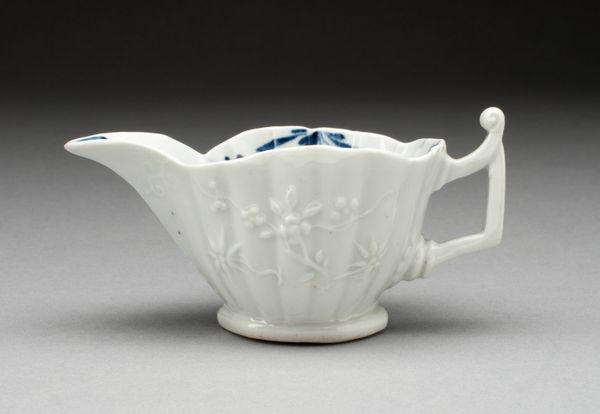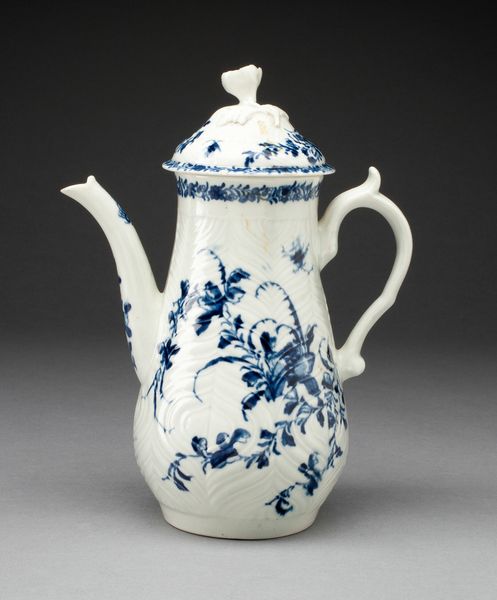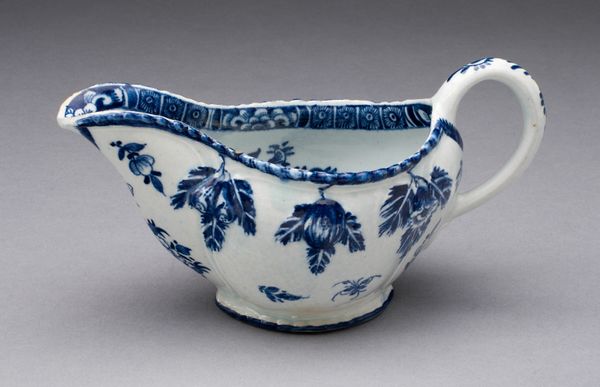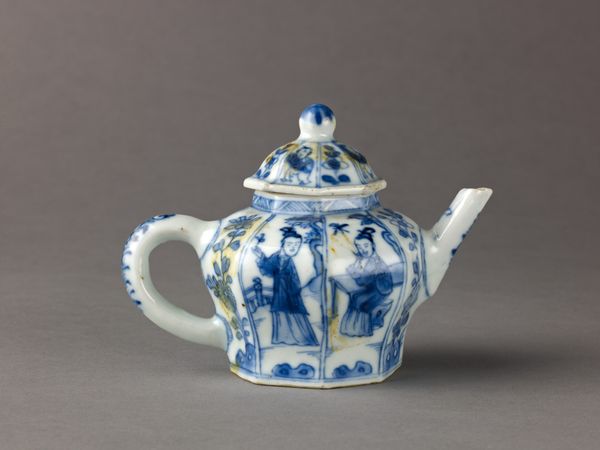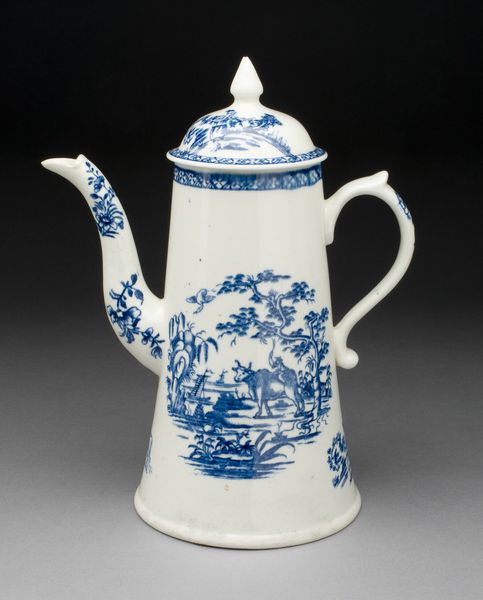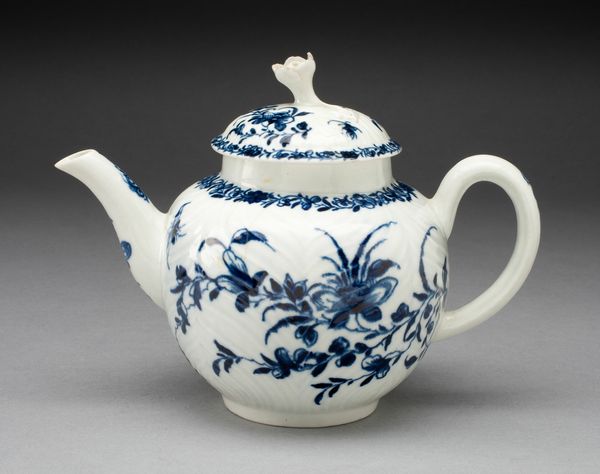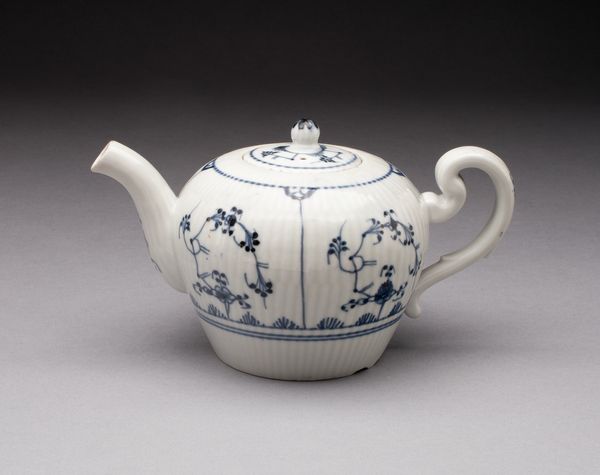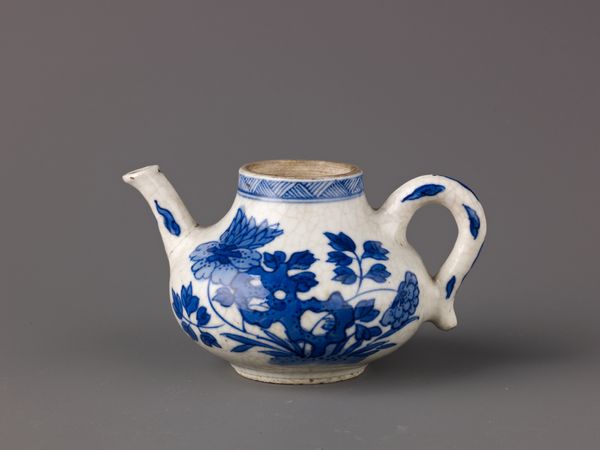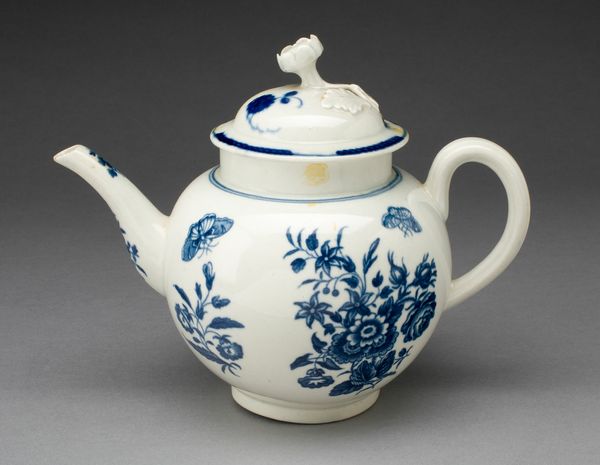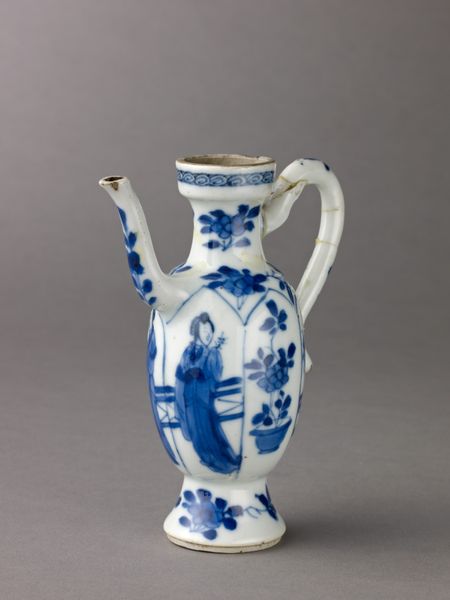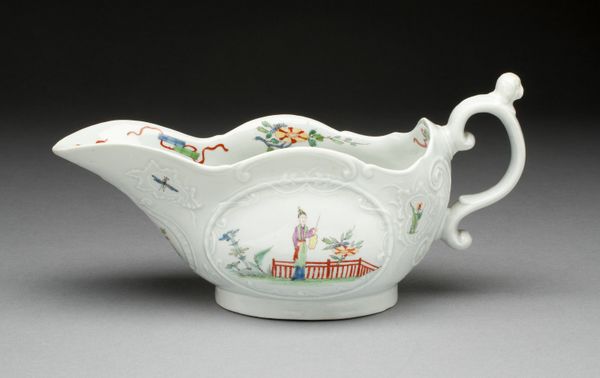
ceramic, porcelain
#
ceramic
#
porcelain
#
ceramic
#
decorative-art
#
erotic-art
#
rococo
Dimensions: 12 × 19.7 × 9 cm (4 3/4 × 7 3/4 × 3 1/3 in.)
Copyright: Public Domain
Editor: This is a porcelain sauceboat made by the Worcester Royal Porcelain Company around 1765. The curves and blue decorations give it a delicate, almost playful feel. What strikes me most is the interplay of textures – the smooth porcelain against the intricate patterns. What do you make of it? Curator: Formally, one is compelled to examine the object's tripartite structure. We observe, first, the base, ornamented with restrained sprigs; then, the primary body, exhibiting both reticulated texture and the applied decoration; finally, the subtly scalloped rim, adorned with a scattering of cobalt florets. Editor: I hadn't considered the "tripartite structure," as you put it. I was too caught up in the rococo asymmetry. What purpose do you think the intense detailing serve? Curator: Note how the whiteness of the porcelain emphasizes its pure form and plasticity. Then we register the contrast between the intricate texture of the ceramic "weave" and the chinoiserie painting—these blue vignettes are enclosed in cartouches whose forms echo and reinforce the vessel's own curves. Do you perceive how these opposing textural effects amplify each other? Editor: I see what you mean. It's not just decoration for the sake of it, but a dialogue between different textures, almost like contrasting brushstrokes in a painting. What a surprising little object! Curator: Precisely. This sauceboat functions not only as a utilitarian object, but also as a site of visual and tactile complexity. By paying close attention to material, technique, and structural arrangement, we come to perceive this small object as a dynamic artwork.
Comments
No comments
Be the first to comment and join the conversation on the ultimate creative platform.
